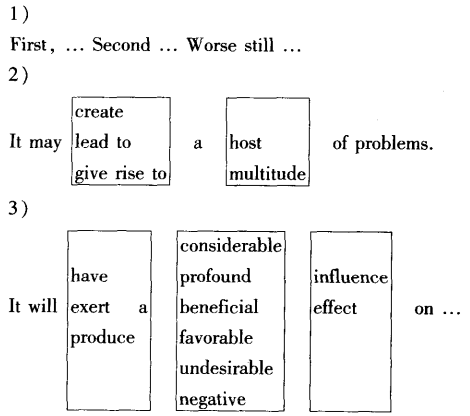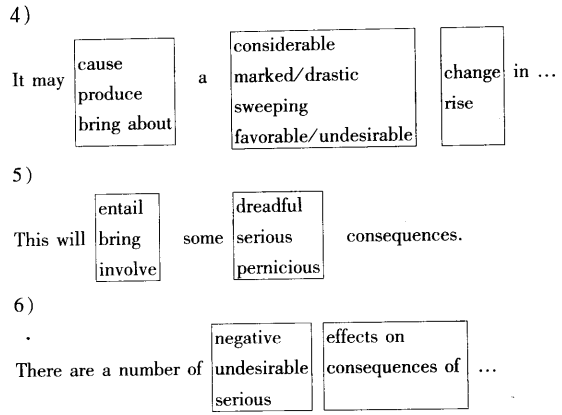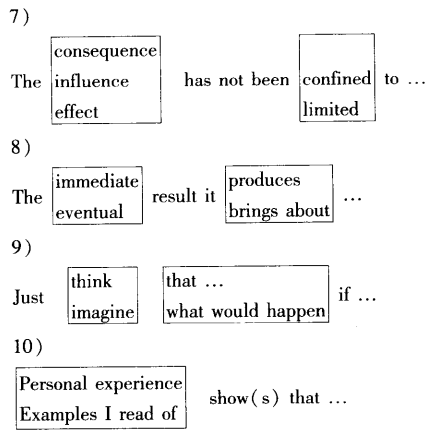2. 分析意义
对一种社会现象或做法表示支持和赞扬,我们往往会分析其优点,突出其积极意义。在分析性作文中,意义的分析是一层比一层深刻。其中,用具体事例尤其是名人事迹来说明是常用的手段。
3. 分析影响
这是最常见的分析性文章。
4. 分析问题
分析事物造成的问题,也同属于这一类结构。
5. 分析变化
分析某事物带来的变化也属于分析性一类文章。
6. 分析原因及影响
除了单一分析影响的文章,还有的作文要求先解释问题或现象的成因,再讨论这种现象带来的危害及影响。这样的写法又有所不同,其结构如下:
Introduction of Problem or Phenomenon
Thesis Statement
The Cause for the Problem
The Cause for the Problem
Effects the Problem Brings
Conclusion
Solution or Suggestion
若单纯分析离婚率高对个人及社会带来的影响,可以这样写:
Divorce Rate in China
P I . The high divorce rate exerts a pernicious effect on both individual and society.
P II. Divorced people tend to feel a profound sense of loss, disappointment, and even failure.
P Ⅲ. Divorce sends emotional shock waves through children, regardless of age and sex.
P Ⅳ. Perhaps the most serious potential effect of divorce is that it undermines social stability.
PV. Ways should be found to reduce the high rate.
但在解释离婚率上升的同时,分析其带来的影响后果,可以这样写:
P I. The divorce rate is getting higher in China in recent years.
P Ⅱ. One reason is that social attitude towards divorced people has changed.
P Ⅲ. Another reason is that newly-made marriage laws make divorce easier than before.
P Ⅳ. The adverse effect on their children and society is serious.
P V. To have a correct attitude toward.
7. 写分析类文章常用句型
写分析性文章,也有一定的句型。例如:




责任编辑:admin
上一篇:英语比较性作文的写作
下一篇:英语解释性作文写作

微信公众号搜索“译员”关注我们,每天为您推送翻译理论和技巧,外语学习及翻译招聘信息。